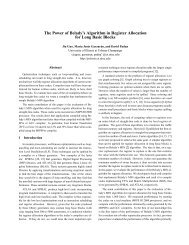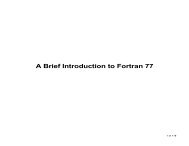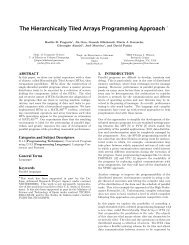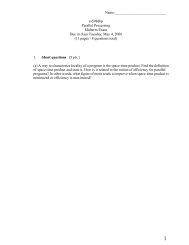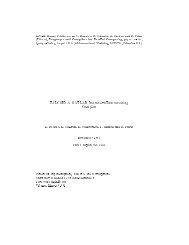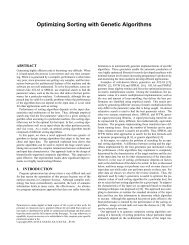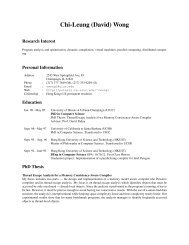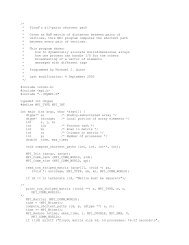COMPILER TECHNIQUES FOR MATLAB PROGRAMS ... - CiteSeerX
COMPILER TECHNIQUES FOR MATLAB PROGRAMS ... - CiteSeerX
COMPILER TECHNIQUES FOR MATLAB PROGRAMS ... - CiteSeerX
Create successful ePaper yourself
Turn your PDF publications into a flip-book with our unique Google optimized e-Paper software.
Although not due to a limitation of our inference mechanism, the current version of<br />
our compiler does not support global variables or sparse constructions, and supports<br />
only a limited number of input/output commands. The support of global variables<br />
and the reminder of the input/output constructions is straightforward, and should be<br />
available in a second version of the compiler. Support for sparse computation requires<br />
more research. This issue is being addressed for the FALCON system in the work by<br />
Gallivan et. al. [GMBW95].<br />
3.2 Phases of the <strong>MATLAB</strong> Compiler<br />
The main challenge of the <strong>MATLAB</strong> compiler is to perform inference on the input program<br />
to determine the variable properties: intrinsic type, rank, shape, and structure.<br />
These<br />
properties are used by the compiler to generate the Fortran 90 declarations and to optimize<br />
the output code.<br />
The <strong>MATLAB</strong> compiler was structured in a conventional way [ASU85] with a series of<br />
dierent passes, as shown in Figure 3.1.<br />
This section discusses the main issues and the<br />
overall strategy adopted for each of the phases of the compiler.<br />
3.2.1 Structure of a <strong>MATLAB</strong> Program<br />
<strong>MATLAB</strong> is a procedural language. Its current version works with essentially one kind of<br />
data structure: a rectangular numerical matrix [Mat92a]. A <strong>MATLAB</strong> program consists of<br />
one or more Fortran-like statements which may include function calls.<br />
There are two types of functions in <strong>MATLAB</strong>: intrinsic or built-in functions, and M-les.<br />
Built-in functions range from elementary mathematical functions, such assqrt, log, and<br />
sin, to more advanced matrix functions, such asinv (for matrix inverse), qr (for orthogonal<br />
triangular decomposition), and eig (for eigenvalues and eigenvectors).<br />
M-les consist of a sequence of <strong>MATLAB</strong> statements, which possibly include references<br />
to other M-les. There are two types of M-les: scripts and functions. A script does not<br />
13



